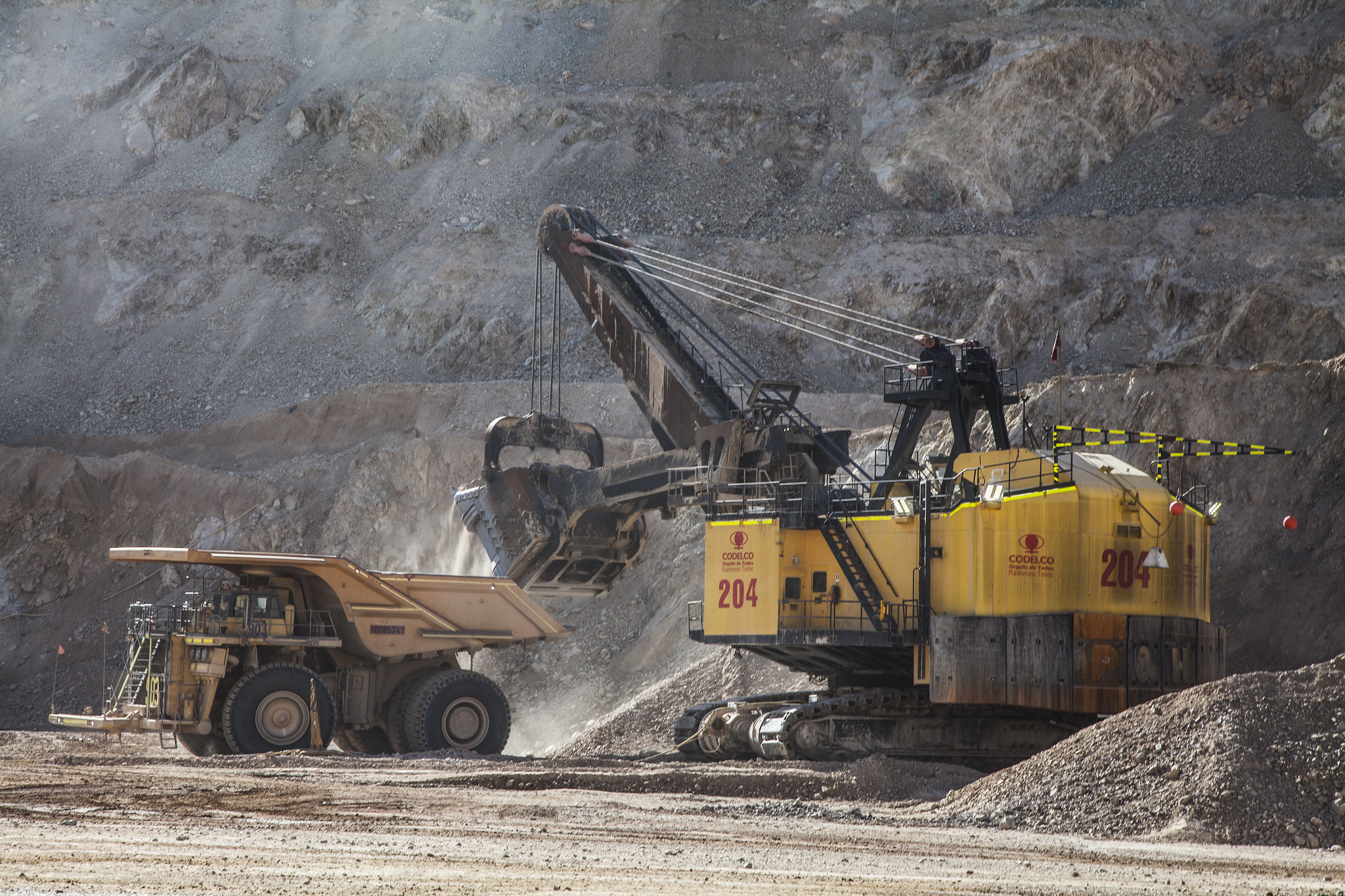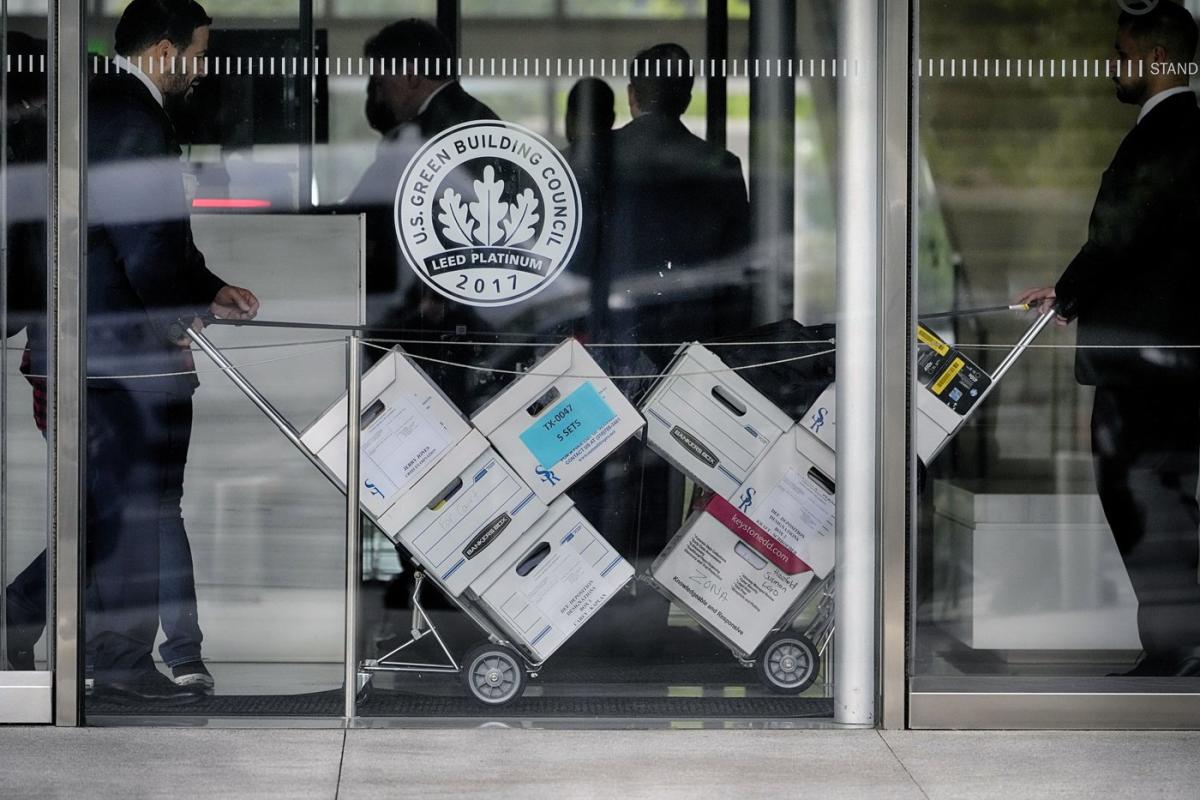Codelco implements climate change action plans

In June 2024, Chilean copper mining giant Codelco released its 2023 annual report, including its sustainability report, outlining its latest analysis and targets related to climate change and emissions reduction.
The company’s medium-term sustainability strategy is based on six commitments by 2030 – including a 70% reduction in emissions. How does the company plan to achieve this? At a high level for Scope 2 emissions, Codelco aims to ensure that 100% of its energy matrix is clean and reduce its carbon footprint by converting all electricity supply contracts to renewable energy sources.
 IM Editor-in-Chief Paul Moore with Codelco’s Head of Climate Action, Pablo Contreras Silva, at Exponor 2024
IM Editor-in-Chief Paul Moore with Codelco’s Head of Climate Action, Pablo Contreras Silva, at Exponor 2024
In January 2024, the company renewed a contract with AES Andes for the Ministro Hales and Radomiro Tomic divisions, committing to supply up to 1.6 TWh/year of renewable energy between 2026 and 2040, ensuring that 70% of its energy supply would come from clean sources by 2026. And in May 2024, Codelco and Engie announced the modification of a power purchase and sale agreement signed in 2007 between Codelco and Engie’s subsidiary Central Termoeléctrica Andina SpA (CTA), through which the copper company ensured a 100% clean energy matrix by 2030.
In addition, the company has renewed its contract with Pampa Elvira Solar, allowing Codelco to maintain the supply of green energy to its Gabriela Mistral division for another ten years.
Conversion to electric vehicles: Codelco is undoubtedly one of the most advanced mining groups in the world when it comes to converting its work buses to electric. 30 Yutong electric buses have recently been put into service in the Salvador department, joining a large number of buses already in use in El Teniente (103), Chuquicamata (45) and Andina (7), as well as 65 buses recently added in Radomiro Tomic. Until now, the Chilean company Reborn Electric Motors has been the main supplier of electric buses to Codelco.
The biggest emitters are, of course, the mining fleets in surface and underground mining. Codelco has also committed to achieving 100 percent electric mobility in underground mines and integrating zero-emission technologies for transport vehicles. In Chile, the company is already a pioneer in testing machines such as hybrid loaders and battery-powered light vehicles underground.
A test program for 14-ton Epiroc ST14-class LHD batteries also took place at El Teniente from November 2022. Codelco says it avoided consuming 160,000 liters of diesel in one year, emitting 433 tons less greenhouse gases into the atmosphere. Further tests with other BEVs, including a Sandvik machine, are planned, with more details to be released later this year. For utility and auxiliary machines, Codelco has already deployed Normet’s SmartDrive technology at Chuquicamta Underground, including units from Charmec and Utimec.
With the switch to trucks for surface operations, Codelco is focusing in the long term on reducing CO2 emissions from open pit mining by evaluating technologies, such as a study investigating the potential of a trolley pilot project at Radomiro Tomic with a minimum 1 km route. If implemented, this would be one of the first in the country, alongside the planned AMSA Los Pelambres and Collahuasi trolley lines.
To discuss further action, Exponor2024 Show in early June in Antofagasta I AM Editor-in-chief Paul Moore met with Pablo Contreras Silva, Head of Climate Action at Codelco. In this role, he leads the team responsible for implementing the copper mining giant’s entire decarbonization and adaptation strategy, which includes Scope 1, Scope 2, but also Scope 3 emissions.
He stressed that Codelco’s Scope 3, or indirect emissions, is also an important target at the moment: “Scope 3 is a problem that not only we face, but the entire industry, as it affects the entire value chain. In the case of Codelco, Scope 3 represents 65% of our total emissions, so this is something we need to address and we are doing so through various initiatives.”
One of them is that Codelco, together with the Alta Ley Corporation, the Association of Industrial Mining Suppliers (Aprimin) and the National Mining Society (Sonami), has developed www.huellaminera.cl, a platform to measure, manage and, as far as possible, reduce the emissions associated with the inputs and products supplied by suppliers.
Looking at Scope 1 and 2, with commercialisation of all battery-powered mining trucks still a long way off, what interim emissions achievements is Codelco aiming for? “As you know, we have set ambitious Scope 1 and 2 targets for 2030, and mining trucks account for 70-80% of our Scope 1 emissions. Like everyone else, we are looking at electrifying these trucks – but it is not something we are doing alone. We are working directly with key OEMs – for example, we are a member of the GHG Alliance with Komatsu. In addition, we are also working closely with OEMs and others through the ICMM’s Innovation for Cleaner, Safer Vehicles (ICSV) initiative.”
He confirmed that Codelco is looking at the potential for trolley assist systems, as well as other technologies such as battery trucks and hybrid retrofits. He added: “It’s a complex issue and the technology development is taking more time than we would have initially expected – so we are looking at other options in the meantime.” He said these include, but are not limited to, biofuels, synthetic fuels such as e-fuels and other alternatives. And as the other major mining companies, including BHP and Rio Tinto, have already explained, there will be no one-size-fits-all solution.
Chile is also host International Mining Events’ The “Electric Mine 2025” conference will take place from 13 to 15 May at the Centro Parque in Las Condes, Santiago.



